Opinion & Analysis
Wishon: What swing weight should your clubs be?
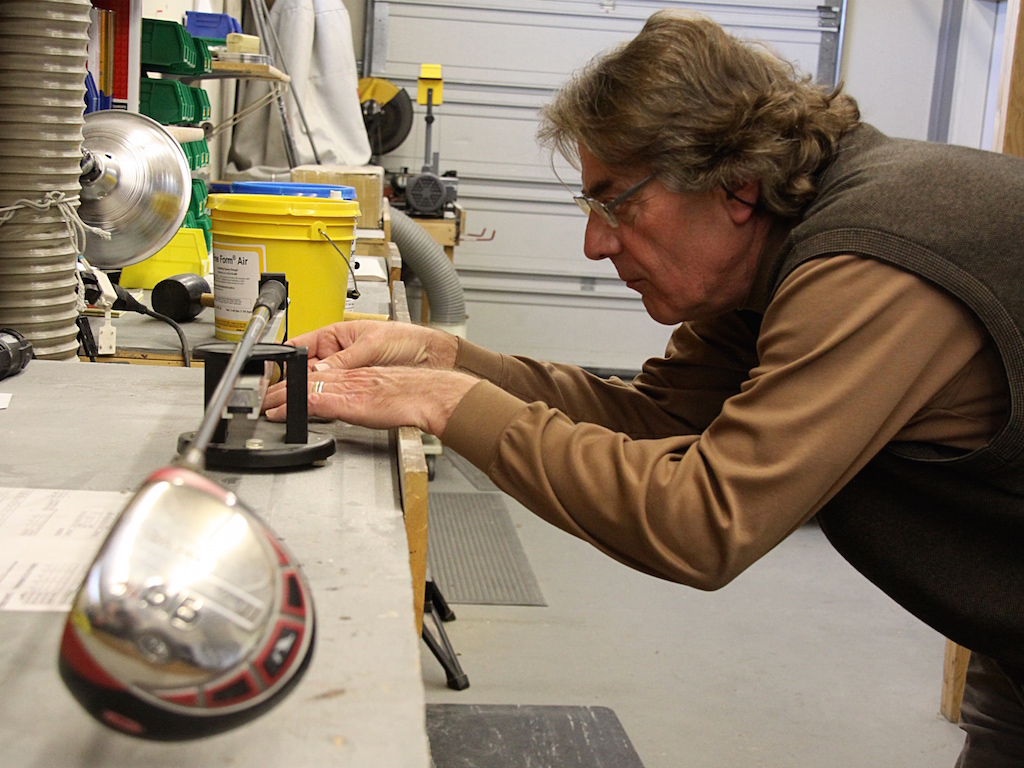
In a previous article, I discussed the fitting of the shaft weight and mentioned that a discussion about the weight of a golf club should not only include shaft weight, but swing weight as well.
The reason? These two elements are so interrelated, and so important when it comes to helping golfers find clubs that will give them their best tempo, timing, rhythm and of course, their best shots.
Before I dig in any further, let’s clarify two things:
- Shaft weight is by far the biggest contributor to the total weight of the club, which is simply a measurement of how heavy a club is.
- Swing weight is the measurement of the head-weight feel of a club. A club with a heavier swing weight will feel heavier to a golfer than one with a lighter swing weight, because its balance point is closer to the club head.
As with the fitting of the shaft weight, the club fitter also has to evaluate the golfer’s transition force, tempo, strength and any pre-determined feel preference the golfer may have when making the decision of what the swing weight of the clubs needs to be.
Both elements — shaft weight and swing weight — are influenced by the same golfer swing characteristics, which is why good club fitters will fit for both the shaft weight and the swing weight at the same time in the fitting process.
In the actual fitting process, however, the shaft weight comes first. This is because the test clubs required to focus on the fitting of shaft weight and swing weight together have to first be assembled with a shaft that the club fitter deems suitable from his analysis.
Shaft flex and bend-profile design is also important, and I’ll cover that in my next article. It’s why good club fitters think about weight and flex/bend profile simultaneously in the fitting process — they have to in order to come up with candidate shafts to use in the test club hitting sessions.
Once the club fitter determines a shaft with suitable weight and the best flex/bend profile characteristics for the golfer’s swing characteristics, the matter of fitting for the swing weight is done by having the golfer hit shots with a test club while adding lead tape to the club head. Shot shape, on-center hit results, and certainly the feedback from the golfer are then assessed.
Usually, it goes like this. As the golfer hits shots with the test clubs, the fitter adds lead tape to the clubs heads — about two swing weight points at a time — while observing the ball flight and on-center hit performance.
The fitter is also asking the golfer questions such as:
- How does your swing tempo/timing feel?
- Do you sense that you are fighting any tendency to be too quick with your tempo?
- Do you sense that you have to make more of an effort to swing the club?
- Do you feel the presence of the club head during the swing enough?
- Do you feel that the head feels a little too light, too heavy, about right?
The club fitter has to find that point at which the golfer begins to sense either a little better feel or begin to feel that his swing tempo and timing is better for the weight feel of the test clubs. That really is the key of a successful total weight/swing weight fitting — when the golfer does not have to consciously think about his swing tempo and timing.
It just happens.
And because the swing weight fitting process has to also include the flex/bend profile and weight of the shaft, the fitter knows that he will be switching between the different shafts he has evaluated as suitable for the golfer while he is also performing the “add a little weight at a time to the club head” evaluation to determine the best head weight feel for the golfer.
This is a perfect example of how experienced club fitters will “multi-task” to evaluate separate, but related specs in the fitting process, all at the same time. It’s why good club fitters are good and others are not when it comes to simultaneously evaluating each of these separate but very much related fitting elements.
The goal in the swing weight fitting is to get the golfer to a point where he reports that the club head is starting to feel a little bit too heavy, or the club is starting to require a little more effort to swing than the golfer would prefer. At that point, the club fitter removes a little of the head weight. Then a few more shots are hit to determine if the golfer still senses the head weight feel to be too much, or just right.
It is possible that the golfer never indicates a distinct, positive feel preference for the weight feel of the test club even when the head weight is brought back from a point of feeling too heavy for the golfer. When this happens, the good club fitters know that they need to test the golfer with a different weight shaft and go through the head weight fitting process all over again.
In my previous story, I offered some basic shaft weight fitting guidelines:
- Strong golfers/aggressive transitions/faster tempos = heavier shaft weights
- Weaker golfers/smooth transitions/smooth tempos = lighter shaft weights
These are guidelines that work for most golfers, but are not 100 percent set in stone for all golfers.
It is not uncommon for strong/aggressive transition/faster tempo golfers to end up being better fit into lighter shafts, but with a higher swing weight. While it certainly is less common for weaker/smooth transition/smooth tempo golfers to do better with a heavier shaft, it is not impossible.
This is why a very experienced club fitter can be worth his weight in gold. With experience come more situations in which the fitter encounters golfers who deviate from the guidelines.
Good clubfitters also realize that the interaction of shaft weight and swing weight is such that it is always possible to find strong/aggressive transition/faster tempo golfers who achieve their best tempo consistency with a lighter shaft, but with a higher swing weight to prevent the light shaft from making the clubs feel too light in some manner.
After all, there are a lot of tour players who play well with 60-to-65-gram shafts in their drivers and fairway woods. And a heavier head weight feel is how this can happen, even though logic may say that the player is too strong and forceful to be fit into such a lightweight shaft.
Sidebar: MOI Matching as an Alternative to Swing Weight Matched Clubs
Matching all clubs in a set to their MOI has become a viable alternative to swing weight matching for many golfers. MOI matching may also be thought of roughly as building the clubs in a set to progressively increase swing weights from long to short irons in the set.
Candidates for MOI matching over swing weight matching can be golfers who:
- Go in and out of consistency issues with the irons
- Suffer from occasional-to-frequent bouts of pulling short iron shots offline
- Sense less comfort and consistency with the short irons vs other irons in the set
For more information on MOI matching, visit: http://wishongolf.com/clubmakers/matching-golf-clubs-by-moi/
Sidebar: Don’t Get Trapped by a Specific Swing Weight
Remember, swing weight is NOT an actual measurement of weight as are grams, ounces or pounds. Swing weight is an arbitrary measurement of the relationship of weight in a golf club about the 14-inch fulcrum point on a swing weight scale.
When fitting swing weight, good club fitters really know that they are instead fitting for the head weight feel of the golf club. They are trying to find what head weight feel is going to bring about the best swing tempo and shot consistency for the golfer based on the length, shaft weight and grip weight of the clubs. Once that best head weight feel is found for the golfer, then the club fitter can perform a swing weight measurement to have as a guideline for the other clubs in the set, or as a baseline for taking the golfer into an MOI matched set.
In short, the head weight feel of D2 in a club that is 45 inches with a 60-gram shaft and a 50-gram grip is not going to be the same head weight feel as D2 in a club that is 43.5 inches with an 80-gram shaft and 40-gram grip. Thus, golfers should not get locked into a particular swing weight when changing length, shaft weight, or grip weight but rather go through a new investigation into what head weight will bring about the best tempo and timing in the swing.
Good club fitters know this, so once they choose the best length, shaft weight and grip preferred by the golfer, they fit for the best head weight feel and do not get locked into a specific swing weight.
Related
- What length should your clubs be?
- What lofts should your clubs be?
- Face angle is crucial for a proper fitting
- The best way to fit lie angle
- How to choose the right club head design
- Tom Wishon’s keys to set makeup
- Getting the right size grip, time after time
- What shaft weight should you play?
- What swing weight should your clubs be?
- What shaft flex should I use?
This story is part of a 10-part series from Tom Wishon on professional club fitting.
Opinion & Analysis
The 2 primary challenges golf equipment companies face

As the editor-in-chief of this website and an observer of the GolfWRX forums and other online golf equipment discourse for over a decade, I’m pretty well attuned to the grunts and grumbles of a significant portion of the golf equipment purchasing spectrum. And before you accuse me of lording above all in some digital ivory tower, I’d like to offer that I worked at golf courses (public and private) for years prior to picking up my pen, so I’m well-versed in the non-degenerate golf equipment consumers out there. I touched (green)grass (retail)!
Complaints about the ills of and related to the OEMs usually follow some version of: Product cycles are too short for real innovation, tour equipment isn’t the same as retail (which is largely not true, by the way), too much is invested in marketing and not enough in R&D, top staffer X hasn’t even put the new driver in play, so it’s obviously not superior to the previous generation, prices are too high, and on and on.
Without digging into the merits of any of these claims, which I believe are mostly red herrings, I’d like to bring into view of our rangefinder what I believe to be the two primary difficulties golf equipment companies face.
One: As Terry Koehler, back when he was the CEO of Ben Hogan, told me at the time of the Ft Worth irons launch, if you can’t regularly hit the golf ball in a coin-sized area in the middle of the face, there’s not a ton that iron technology can do for you. Now, this is less true now with respect to irons than when he said it, and is less and less true by degrees as the clubs get larger (utilities, fairways, hybrids, drivers), but there remains a great deal of golf equipment truth in that statement. Think about it — which is to say, in TL;DR fashion, get lessons from a qualified instructor who will teach you about the fundamentals of repeatable impact and how the golf swing works, not just offer band-aid fixes. If you can’t repeatably deliver the golf club to the golf ball in something resembling the manner it was designed for, how can you expect to be getting the most out of the club — put another way, the maximum value from your investment?
Similarly, game improvement equipment can only improve your game if you game it. In other words, get fit for the clubs you ought to be playing rather than filling the bag with the ones you wish you could hit or used to be able to hit. Of course, don’t do this if you don’t care about performance and just want to hit a forged blade while playing off an 18 handicap. That’s absolutely fine. There were plenty of members in clubs back in the day playing Hogan Apex or Mizuno MP-32 irons who had no business doing so from a ballstriking standpoint, but they enjoyed their look, feel, and complementary qualities to their Gatsby hats and cashmere sweaters. Do what brings you a measure of joy in this maddening game.
Now, the second issue. This is not a plea for non-conforming equipment; rather, it is a statement of fact. USGA/R&A limits on every facet of golf equipment are detrimental to golf equipment manufacturers. Sure, you know this, but do you think about it as it applies to almost every element of equipment? A 500cc driver would be inherently more forgiving than a 460cc, as one with a COR measurement in excess of 0.83. 50-inch shafts. Box grooves. And on and on.
Would fewer regulations be objectively bad for the game? Would this erode its soul? Fortunately, that’s beside the point of this exercise, which is merely to point out the facts. The fact, in this case, is that equipment restrictions and regulations are the slaughterbench of an abundance of innovation in the golf equipment space. Is this for the best? Well, now I’ve asked the question twice and might as well give a partial response, I guess my answer to that would be, “It depends on what type of golf you’re playing and who you’re playing it with.”
For my part, I don’t mind embarrassing myself with vintage blades and persimmons chasing after the quasi-spiritual elevation of a well-struck shot, but that’s just me. Plenty of folks don’t give a damn if their grooves are conforming. Plenty of folks think the folks in Liberty Corner ought to add a prison to the museum for such offences. And those are just a few of the considerations for the amateur game — which doesn’t get inside the gallery ropes of the pro game…
Different strokes in the game of golf, in my humble opinion.
Anyway, I believe equipment company engineers are genuinely trying to build better equipment year over year. The marketing departments are trying to find ways to make this equipment appeal to the broadest segment of the golf market possible. All of this against (1) the backdrop of — at least for now — firm product cycles. And golfers who, with their ~15 average handicap (men), for the most part, are not striping the golf ball like Tiger in his prime and seem to have less and less time year over year to practice and improve. (2) Regulations that massively restrict what they’re able to do…
That’s the landscape as I see it and the real headwinds for golf equipment companies. No doubt, there’s more I haven’t considered, but I think the previous is a better — and better faith — point of departure when formulating any serious commentary on the golf equipment world than some of the more cynical and conspiratorial takes I hear.
Agree? Disagree? Think I’m worthy of an Adam Hadwin-esque security guard tackle? Let me know in the comments.
@golfoncbs The infamous Adam Hadwin tackle ? #golf #fyp #canada #pgatour #adamhadwin ? Ghibli-style nostalgic waltz – MaSssuguMusic
Podcasts
Fore Love of Golf: Introducing a new club concept

Episode #16 brings us Cliff McKinney. Cliff is the founder of Old Charlie Golf Club, a new club, and concept, to be built in the Florida panhandle. The model is quite interesting and aims to make great, private golf more affordable. We hope you enjoy the show!
Opinion & Analysis
On Scottie Scheffler wondering ‘What’s the point of winning?’

Last week, I came across a reel from BBC Sport on Instagram featuring Scottie Scheffler speaking to the media ahead of The Open at Royal Portrush. In it, he shared that he often wonders what the point is of wanting to win tournaments so badly — especially when he knows, deep down, that it doesn’t lead to a truly fulfilling life.
View this post on Instagram
“Is it great to be able to win tournaments and to accomplish the things I have in the game of golf? Yeah, it brings tears to my eyes just to think about it because I’ve literally worked my entire life to be good at this sport,” Scheffler said. “To have that kind of sense of accomplishment, I think, is a pretty cool feeling. To get to live out your dreams is very special, but at the end of the day, I’m not out here to inspire the next generation of golfers. I’m not out here to inspire someone to be the best player in the world, because what’s the point?”
Ironically — or perhaps perfectly — he went on to win the claret jug.
That question — what’s the point of winning? — cuts straight to the heart of the human journey.
As someone who’s spent over two decades in the trenches of professional golf, and in deep study of the mental, emotional, and spiritual dimensions of the game, I see Scottie’s inner conflict as a sign of soul evolution in motion.
I came to golf late. I wasn’t a junior standout or college All-American. At 27, I left a steady corporate job to see if I could be on the PGA Tour starting as a 14-handicap, average-length hitter. Over the years, my journey has been defined less by trophies and more by the relentless effort to navigate the deeply inequitable and gated system of professional golf — an effort that ultimately turned inward and helped me evolve as both a golfer and a person.
One perspective that helped me make sense of this inner dissonance around competition and our culture’s tendency to overvalue winning is the idea of soul evolution.
The University of Virginia’s Division of Perceptual Studies has done extensive research on reincarnation, and Netflix’s Surviving Death (Episode 6) explores the topic, too. Whether you take it literally or metaphorically, the idea that we’re on a long arc of growth — from beginner to sage elder — offers a profound perspective.
If you accept the premise literally, then terms like “young soul” and “old soul” start to hold meaning. However, even if we set the word “soul” aside, it’s easy to see that different levels of life experience produce different worldviews.
Newer souls — or people in earlier stages of their development — may be curious and kind but still lack discernment or depth. There is a naivety, and they don’t yet question as deeply, tending to see things in black and white, partly because certainty feels safer than confronting the unknown.
As we gain more experience, we begin to experiment. We test limits. We chase extreme external goals — sometimes at the expense of health, relationships, or inner peace — still operating from hunger, ambition, and the fragility of the ego.
It’s a necessary stage, but often a turbulent and unfulfilling one.
David Duval fell off the map after reaching World No. 1. Bubba Watson had his own “Is this it?” moment with his caddie, Ted Scott, after winning the Masters.
In Aaron Rodgers: Enigma, reflecting on his 2011 Super Bowl win, Rodgers said:
“Now I’ve accomplished the only thing that I really, really wanted to do in my life. Now what? I was like, ‘Did I aim at the wrong thing? Did I spend too much time thinking about stuff that ultimately doesn’t give you true happiness?’”
Jim Carrey once said, “I think everybody should get rich and famous and do everything they ever dreamed of so they can see that it’s not the answer.”
Eventually, though, something shifts.
We begin to see in shades of gray. Winning, dominating, accumulating—these pursuits lose their shine. The rewards feel more fleeting. Living in a constant state of fight-or-flight makes us feel alive, yes, but not happy and joyful.
Compassion begins to replace ambition. Love, presence, and gratitude become more fulfilling than status, profits, or trophies. We crave balance over burnout. Collaboration over competition. Meaning over metrics.
Interestingly, if we zoom out, we can apply this same model to nations and cultures. Countries, like people, have a collective “soul stage” made up of the individuals within them.
Take the United States, for example. I’d place it as a mid-level soul: highly competitive and deeply driven, but still learning emotional maturity. Still uncomfortable with nuance. Still believing that more is always better. Despite its global wins, the U.S. currently ranks just 23rd in happiness (as of 2025). You might liken it to a gifted teenager—bold, eager, and ambitious, but angsty and still figuring out how to live well and in balance. As much as a parent wants to protect their child, sometimes the child has to make their own mistakes to truly grow.
So when Scottie Scheffler wonders what the point of winning is, I don’t see someone losing strength.
I see someone evolving.
He’s beginning to look beyond the leaderboard. Beyond metrics of success that carry a lower vibration. And yet, in a poetic twist, Scheffler did go on to win The Open. But that only reinforces the point: even at the pinnacle, the question remains. And if more of us in the golf and sports world — and in U.S. culture at large — started asking similar questions, we might discover that the more meaningful trophy isn’t about accumulating or beating others at all costs.
It’s about awakening and evolving to something more than winning could ever promise.





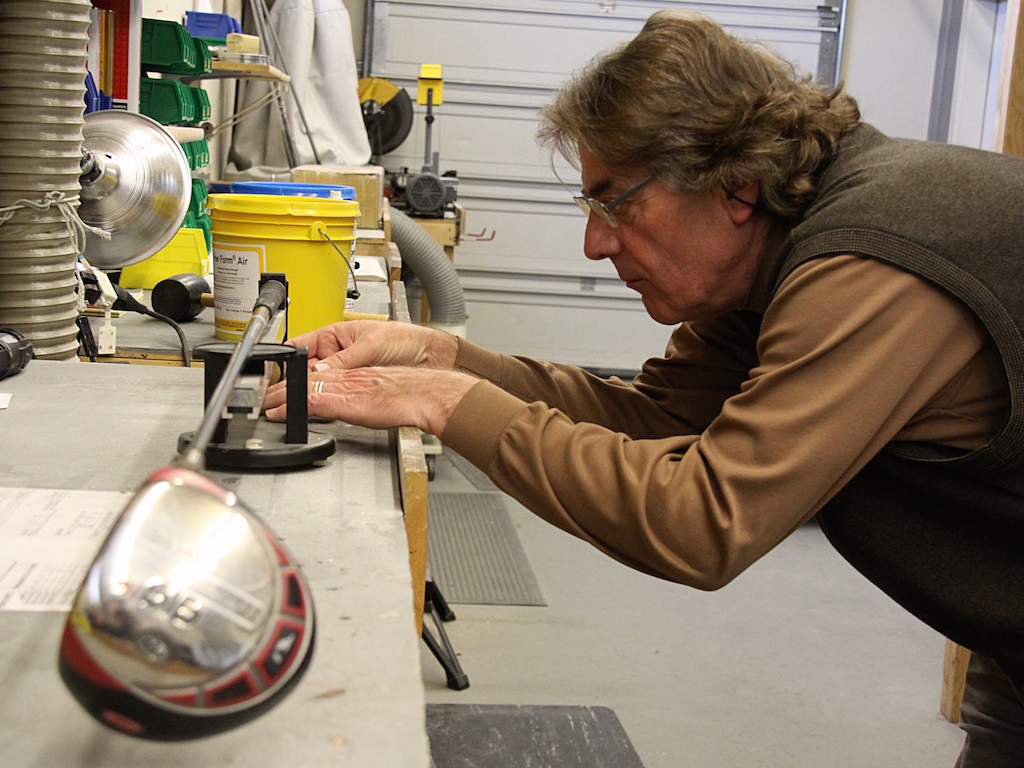
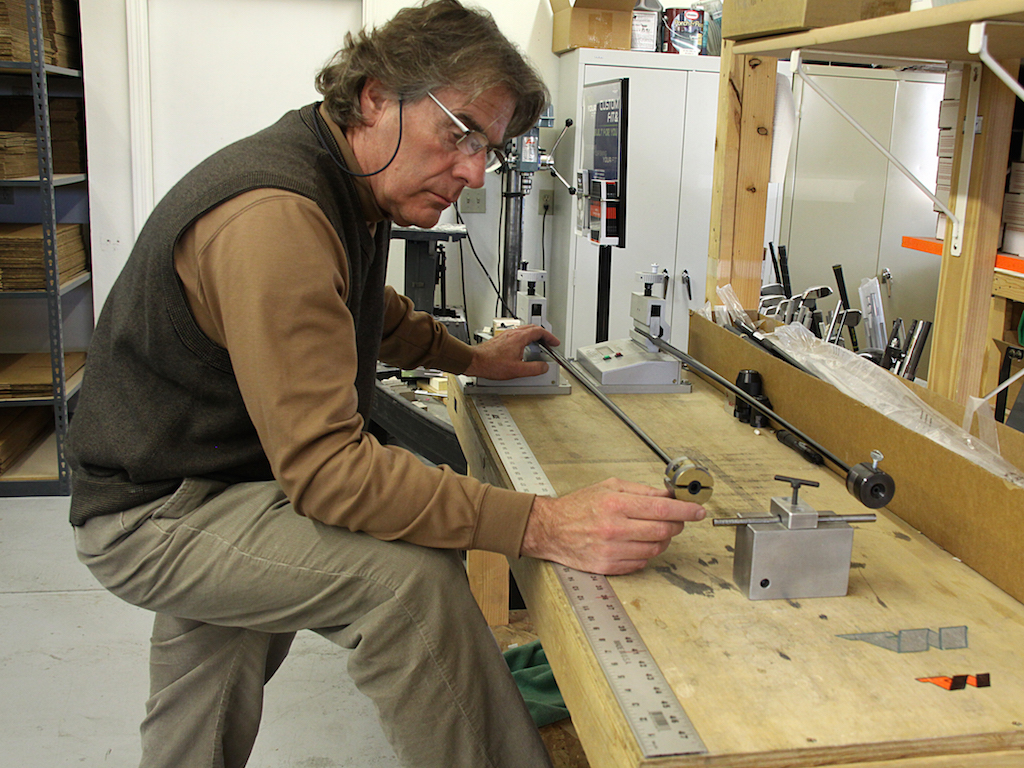
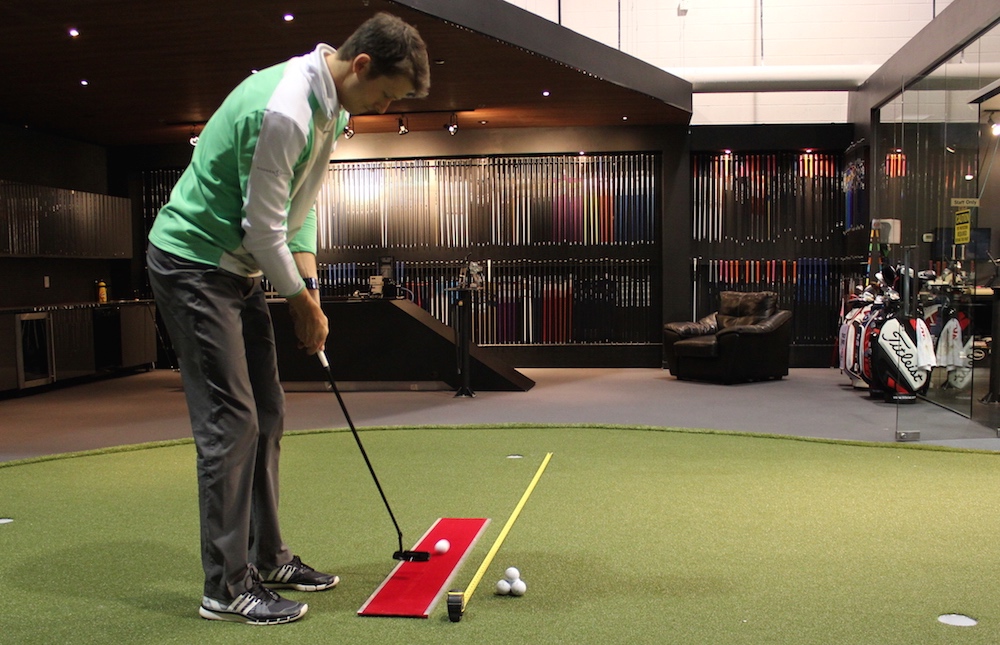
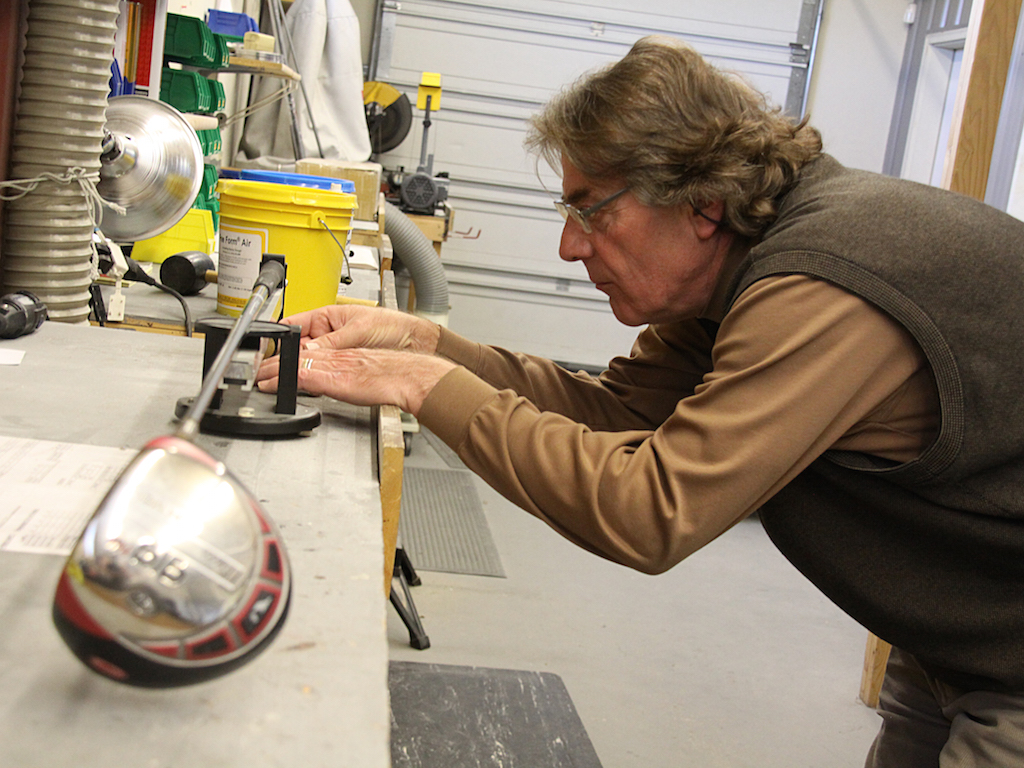
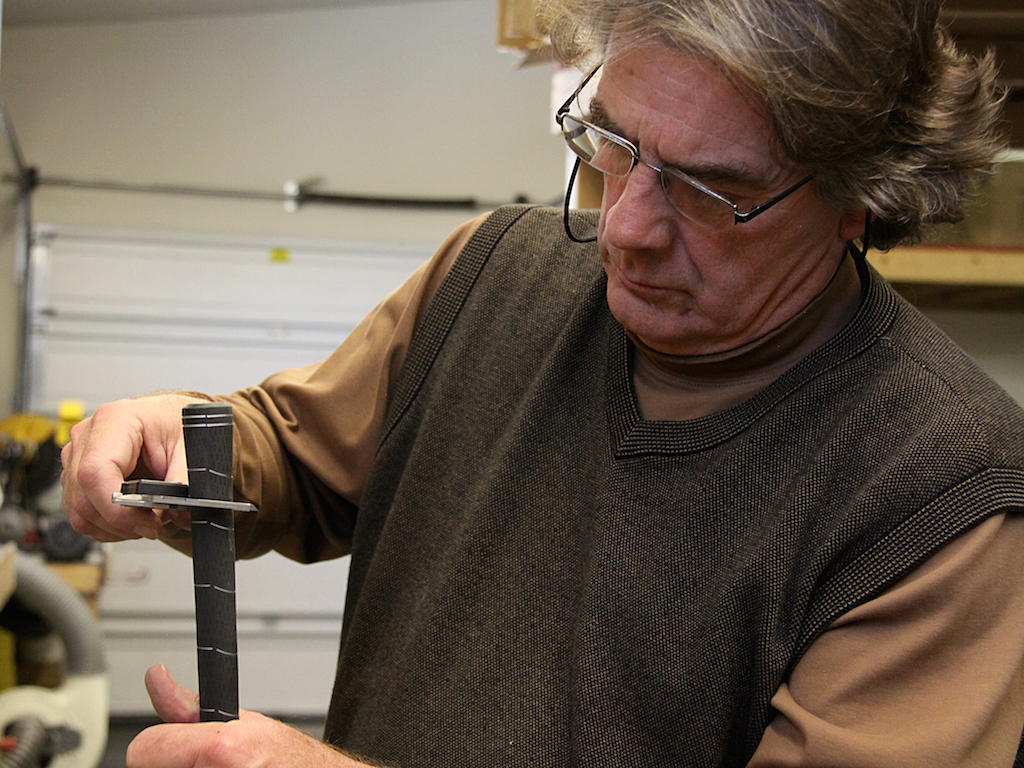








Pingback: Does Club Catcher affect your swing?
Pingback: Best 8 golf swing weight chart - lindaadvisors.com
Pingback: Do Golf Gloves Help? Our Expert Opinion - Top Rank Golf
Grace
Aug 16, 2020 at 10:21 am
I have Rogue x irons and I had the swing weight checked and every club has a different swing weight. I purchased these crabs new. Is that correct?
Or should they be the same?
greg
Jul 14, 2016 at 3:25 am
great article, Mr. wishon. what is your take on bridging the gap between shaft weights throughout the set. for example most people have a 55 -65 g weight shaft in their drivers and around 100-110g shafts in irons.would golfers in general see an improvement in consistency if there was a smaller difference in shaft weight throughout the set. Sergio Garcia plays a 100+ g shaft in his driver and his irons are in 120g shafts. would I benefit if I went from my 120g iron shafts to 90g shafts so that its not way too different in weight in comparison to my 70g driver shaft ?
Joe
Jun 11, 2016 at 4:53 pm
Tom, Great article. I grew up with traditional loft and lie theories that have been blown out of the water and proportion for that matter. I recently had a set of mp 64’s built with KBS tour S. 2degrees flat. Played well with them but they always seemed a little long at STD length as I am only 5-7″. I found myself choking up on most all the irons, including the PW, so I had them cut from the butt end 1/2inch. Love the way they feel as I always wanted a little lighter club, similar to the Cobra cavity backs I played years ago with graphite shafts, but know that I lost significant swing weight. ( most likely D3 to C8 or C9. ) Played a few rounds and love the overall weight but am probably getting a little quick. Is lead tape the answer?
Devon
Mar 18, 2015 at 12:03 am
Hi Tom:
I recently bought a set of Cobra amp cell pro muscle back irons. The clubs are factory swing weight D3 3-9. I am a tall guy (6’5″) with pretty fast club head speed, 115+ for driver, and 4 handicap. I have the DG X100s in the irons, and they are 1/2″ extended. I also have big hands, and have the Lamkin Oversize R.E.L. 3GEN ACE grips, which weigh 78 grams, as opposed to the factory New Decade MC weighing 46.5 g. By referencing another thread on this site (see below), I figure the longer, heavier shafts and heavier grips mean my clubs are 9 SW points lighter than factory, or about a C4. I also see that better players with faster swings might want a heavier swing weight, which means my ideal may be heavier than D3. That same thread suggests I need 2 grams of club head weight for 1 SW point. The way I read this, I need to add at least 18 grams to club head to get back to D3, and more if I want heavier than D3. That seems like a lot of lead tape. Two questions: 1) am I right in my calculation that I would need to add 18 grams to get back to D3 and more for higher than D3; and 2) if I am correct, is it wise to get 18+ grams in the head by adding lead tape, or is there a better way?
Thanks so much for sharing your knowledge. Super helpful.
http://www.golfwrx.com/forums/topic/44071-swing-weight-factors-in-relation-to-parts/
Tom Wishon
Mar 18, 2015 at 10:23 am
Devon:
Once a golfer begins to use very heavy grips or a substantial counterweight in the butt end of the shaft, you pretty much have to throw swingweight measurements out the window and rely strictly on experimenting with the headweight until you reach a point that the head does not feel too light or too heavy during the swing. And once that point is found, then for future reference you can take a swt measurement. But that swt measurement will only be pertinent for your specific combination of length + shaft weight + grip weight.
When you use a very heavy grip, more times than not if you keep adding weight to the head to get the swingweight back up to what it was with a normal weight grip, the head weight feel will be too heavy. Hence the reason you have to go with a trial and experimentation process to add weight to the head until you get to a point the head weight feel is not too light or too heavy and not really aim at a specific swingweight measurement.
This by the way, is one of the ways that MOI Matching of clubs can be better than using swingweight . With a very heavy grip, the MOI is not affected all that much because the increase in grip weight is at a point on the club closest to the MOI’s axis of rotation for its measurement. The idea would be to install the heavy grip, then start experimenting with adding weight to the head to set the MOI at the level it was in the clubs before the heavy grip installation. And in this case, you would not be adding all that much weight to the head to get to that same MOI level as before.
Devon
Mar 18, 2015 at 9:52 pm
Tom, thank you so much for responding. I would not have guessed that getting a lot heavier in butt end wouldn’t necessarily mean you have to add a ton of weight to the club head. I will say that, having yet to experiment with adding weight, my clubs actually feel pretty good without any added weight on club head, which would confirm what you are saying in your reply. I’m glad I asked, because I was envisioning this hideous glob of lead tape pasted all over the back of my beautiful new blades, and a 7 iron that weighed as much as a brick, and I was thinking that can’t be right. I’m super excited to go experiment now. Who knows, maybe I’ll even end up with an MOI matched set….:)
Thanks again.
sam
Mar 6, 2015 at 8:26 pm
hey Tom, again a great article.
whats you thoughts on counterbalancing?
i have a tank cruiser putter and find the counter weight is great for my stroke so how about the rest of the set?
is it true with the weight more in the butt end it can help with swing plane? (slight over the top issues) “dropping” it inside a bit more and helping with a smoother transition?
is it worth putting a weight in the butt of the driver for a trial?
love to hear you thoughts and if you use this method yourself in certain builds?
Thanks Tom keep up the great work!!
Tom Wishon
Mar 16, 2015 at 10:33 am
SAM
Absolutely we and many clubfitters see a very high percentage of golfers improve with the PUTTER when using a heavier counterweight in the butt end of the shaft, one that is most typically 80g to 100g. The effect is to put more weight in the hands to calm down the stroke action more to result in better distance control, a reduction in push/pull tendency and more on center hits for better overall putting consistency. No question about this.
But with regard to use in full swing clubs, here is really is a trial and experimentation, hit or miss thing. No question some golfers have improved their clubhead speed and release with counterweights in the realm of 20 to 40g in the butt end of their full swing clubs. But we cannot really find a common thread in terms of what swing types are more prone to improvement with a counterweight in the full swing clubs. We’ve seen smooth swingers, slower speed players, aggressive swingers, higher speed players both improve and not improve with a counterweight.
So for now, until we or someone else finds that common thread to better pinpoint who will and won;t improve from a counterweight in the full swing clubs, it is a matter of try it and see what happens but don’t get bummed if nothing happens.
tlmck
Mar 6, 2015 at 5:46 am
Due to physical ailments, I have recently switched to ultralite graphite shafts in all my clubs with a heavier swingweight and am loving it. I take the club back slow with a slight pause at the top, and then just let gravity do the rest. Just effortless, pain free power. Even accounting for the stronger lofts on the new clubs, I have still picked up an honest 4 yards carry with the irons, and about 8 with the driver. My accuracy has not suffered either. I had actually tried swingweights down in the mid C range at first, but that seemed to required more effort to keep on target.
Tom Wishon
Mar 6, 2015 at 10:15 am
TIMCK
Absolutely a perfect example of how finding the right head feel does contribute to better swing timing and from it, the ability to maximize clubhead speed potential and shot consistency !! That’s precisely the value of working to find the best combination of total weight + headweight feel. Good for you that you went on this “search” and found YOUR best weight distribution in your clubs!
Joe Golfer
Mar 6, 2015 at 2:17 am
@Tom Wishon. I would love to see an article giving suggestions on what shaft profile is best for which type of golfer.
Nowadays we often hear about butt stiffness, middle of shaft stiffness, and tip stiffness (yes, I realize it can get much more complicated than just measuring at three areas, but I mention these three simply because shaft manufacturers often describe shafts in this manner rather that listing points all along the shaft).
I think most of us know that a stiff tip shaft will give a lower ball flight and is generally for the faster swinging player who does not need help getting the ball into the air.
I was wondering if you could offer some thoughts on the other two areas, the butt and middle profiles. For example, would a slower tempo player who still has decent swing speed like a soft butt, medium butt, or stiffer butt profile. Likewise for the mid point profile of the shaft.
Some discussion on fast tempo players vs slower tempo players on these two aspects (butt and mid stiffness) of shaft profile would be quite interesting. Or are these areas simply personal preference, trial and error?
I realize that not everybody fits into the same boat, and that there are exceptions to every rule, but it would still be interesting to hear your well-informed opinion on such matters as far as what the findings are in general for the majority of golfers.
Always appreciate your articles.
Tom Wishon
Mar 6, 2015 at 10:19 am
JoeG
The next article in this series is about fitting for flex and bend profile of the shaft. But since these articles have to be short, I won’t be able to cover as much as I did a bit back when I did a three part article all about shafts and shaft fitting and golfer swing characteristics to shaft design spec relationships. Go here – http://www.golfwrx.com/author/tomwishon/ Scroll way down and you will see Part 1, 2, and 3 of this series of shaft articles. The info there will answer all your questions.
Thanks for your interest for sure.
theo
Mar 5, 2015 at 10:12 pm
The “don’t get trapped” sidebar is a great read. I’ve been in this ‘ether of confusion’ much of my golf life and this paragraph provides some clarity. I used to wear the “I’m a D3 guy” badge thought about having it tattoo’ed on my arm. But then I’d feel someone else “heavy” irons and change my allegiance on the spot. And when I trie to replicate the swingweight mine felt “different”. And on and on. This is a good explanation. I wish someone would come up with a new standard besides swingweight because it’s caused me much grief. Thanks Thomas.
Tom Wishon
Mar 6, 2015 at 10:30 am
Theo
Well there is for sure another way although as yet I won’t call it a “standard” – but it sure would be a much better way for golfers to empirically know how to always end up with the same swing feel when they switch specs like length, shaft weight, grip weight, head weight. It’s in the other brief sidebar about MOI MATCHING as an alternative to swingweight matching of clubs. There’s a link in that sidebar to an article we put together to explain MOI matching, what it is, how it works, why it is potentially a better way to reference swing feel in clubs than swingweight. There are a number of more technically aware clubfitters who have been making all clubs they fit and build to be MOI matched for several years now.
Few have heard of it unless they hound this forum a lot – there have been a number of threads on WRX’s clubtech forum about MOI Matching. Few have heard of it as well because the OEMS don’t do it. Many think if the big companies don’t embrace something then it can’t be any good. There are several reasons they haven’t even though I can assure you they know of it and a couple have even commissioned a serious “look see” into it.
First, all the OEMs make their clubs to a series of standard specs so their clubs can be shipped to all the retail golf outlets to be sold off the rack. They do this because this is the only way to sell the highest volume of clubs. Hence all the clubs sold off the rack can only be made to one swingweight as a std spec. MOI matching has no advantage if you just pick one MOI and make all your clubs to that single MOI measurement. It has to be fit to each golfer just like swingweight should – based on the golfer’s strength + swing force + sense of feel for their swing timing and rhythm. So for an OEM to go with MOI matching, it would not do anything better for them since they have to make their clubs to one series of std specs.
Second reason the OEMs won’t do MOI matching is because it would take a HUGE educational effort on their part to convince the millions of golfers who are so used to swingweight matched clubs that it is better. It would only take ten golfers putting their MOI matched clubs on a swingweight scale and wondering negatively why all the clubs are different swingweights before an OEM would toss in the towel and go back to swingweight.
Thanks for your interest !
Hippocamp
Mar 5, 2015 at 1:36 pm
Thanks for a great article, Tom.
Any advice on how to deal with these new shafts with super high balance point? Just swapped a stock 65g 3W shaft for an Aldila Tour Blue 85g shaft with the idea of shortening the club by 1/2″ or so. Initially cut the Tour Blue to stock 43″ and was puzzled that the club actually had a lower SW with the shaft that weighed 20g more – at exactly the same length. Then it became clear that most of that extra weight was near the butt in the Tour Blue.
Anyway, made it clear that the distribution of weight in the shaft is more important than total weight for determining the SW of the club.
Curt
Mar 5, 2015 at 12:58 pm
Takes some cajones to call out one of the best in the Biz………
ken
Mar 5, 2015 at 12:40 pm
I don’t know a darned thing about swing weight. Nor do I care to know.
When I pick up the club at the gold shop and awing it few times, I immediately know whether I like the feel and weight of the club or not….
IN fact I would tell the club fitter “don’t bother telling me the swing weight. You’ll just confuse me.”
Jeff Borders
Mar 5, 2015 at 12:32 pm
But aren’t most club heads around 200-205g? I think the shaft weight is a lot more variable with today’s raw head weight. I could go with a shaft in the 50 gram range all the way up to 80+ grams.
Marni Ines
Mar 5, 2015 at 11:38 am
Have to disagree with the comment that shaft weight is, by far, the largest contributor to the total weight of the club, because, it is not. The head is BY FAR, the largest contributor to the total weight of the club.
Tom Wishon
Mar 5, 2015 at 1:00 pm
Marni
Let me explain why the shaft weight most definitely IS the biggest contributor to the total weight. Let’s talk driver just for sake of the explanation but it is true for all other clubs as well. Graphite shafts can be found for drivers that weigh as little as 39g up to 90g. We won’t include steel here because far less than 1% of all golfers play with steel shafts in the driver today. So that is a 51g range in the shaft weight.
The vast majority of grips for men exist between mid 40s and mid 50s in gram weight. Sure there are some exceptions to this but they are very seldom used for the vast majority of golfers. So grip weight exists in only a 10g or so high to low range.
The headweight is what is used to control the final swingweight of the club. Let’s say you build two drivers, one with a 39g shaft and one with a 90g shaft. To achieve a D1 swingweight for example at a length of 44″ with a normal 50g grip, with the 39g shaft the head has to weigh 213g and that club has a total weight of 302g. To achieve a D1 swingweight at 44″ with the same 50g grip with the 90g shaft, the head has to weigh 200g which brings this club to a total weight of 340g.
So for a 51g range in shaft weight, the head weight only ranges by 13g to achieve the same swingweight at the same length with the same grip. But the total weight is different by 38g, which is far more than the head weight range.
Hence shaft weight is the major determinant of the total weight of any club. Thanks for asking about this so I could have the chance to explain this more clearly.
NaborsX
Mar 6, 2015 at 12:49 pm
Fantastic info. Really appreciate you sharing the knowledge!
John P
Mar 6, 2015 at 4:51 pm
As a swinger of a set 770 CFE’s I love my Wishons. However, I think head weight is the largest contributed to TOTAL weight of a club. In the example the heads are 70.5 and 58.8 percent of the TOTAL club weight. Maybe the shaft is a big contributor to SWING WEIGHT because the weight difference is distributed along the length of the club. Love these articles, keep them coming!
PJM
Mar 8, 2015 at 5:18 am
Hi Tom. Thanks for the article and the explanation. I think your comment that the shaft is the major determinant of the total weight is clearer than your earlier comment that the shaft is the biggest contributor to the total weight. I agree with Marni’s interpretation that the heaviest component (i.e., the club head) is the biggest contributor to the total weight, but understand that you are saying that there is much greater variation in the weight of the shaft than other components. Thanks again for sharing your knowledge and experience.